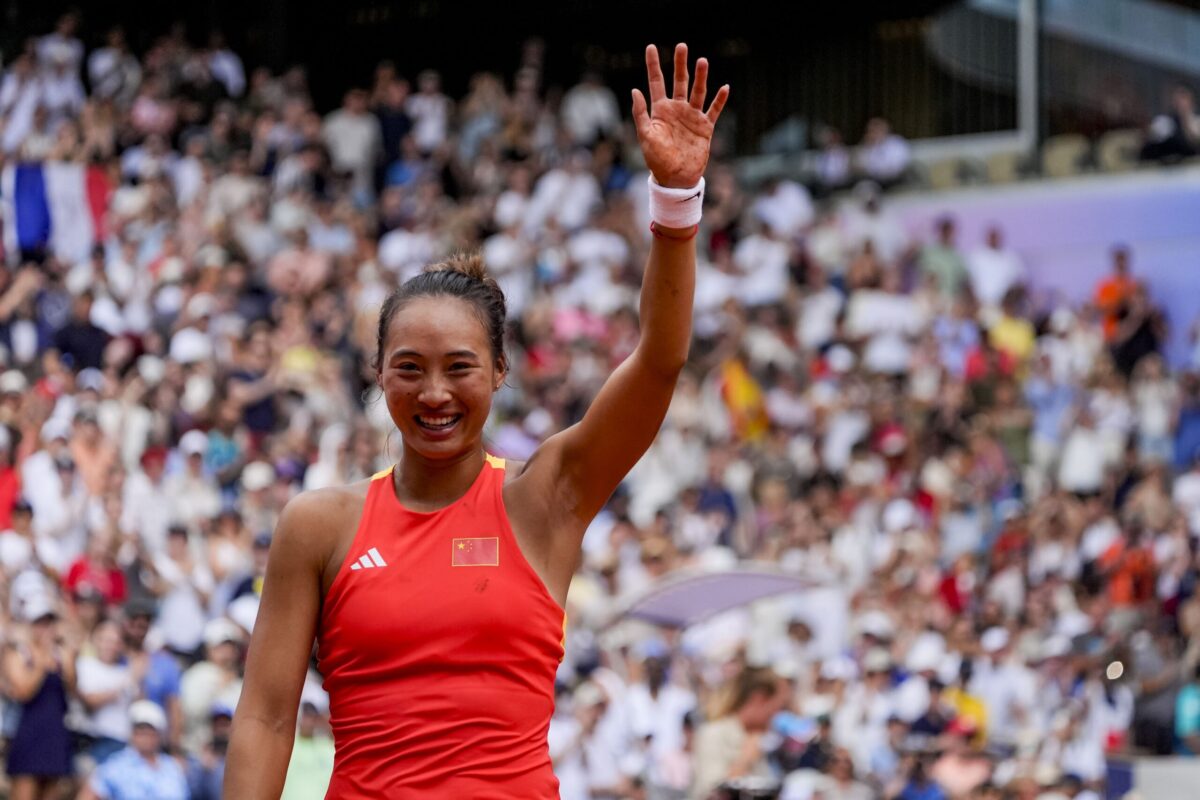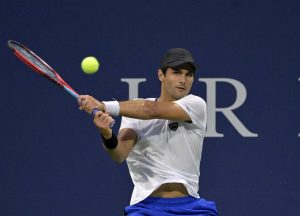Many thought Iga Swiatek winning a Gold Medal at the Paris Olympics was inevitable. Her rivals Aryna Sabalenka and Elena Rybakina were among the women’s players who withdrew from the Olympics before the event began. Jasmine Paolini and Coco Gauff were then knocked out, making her path to glory look even more straightforward. However, the four-time French Open champion was stunned by Qinwen Zheng 6-2 7-5 in the semifinal at Roland-Garros. Swiatek was far below her best, but Zheng also played a really smart match. This article discusses three tactics Zheng used that the world No. 1 had no answer to.
How Qinwen Zheng Strategically Outclassed Iga Swiatek
1. Zheng Varied the Pace of Her Shots
Much of the rhetoric before the match was about how Zheng had to be ultra-aggressive to have a chance against Swiatek. Panicking and making several unforced errors is a common mistake players make against Swiatek, especially on clay. Zheng hit some big shots during her triumph, especially when she landed an excellent first-serve. Seizing the initiative at the right moments was something she did well on Court Philippe-Chatrier.
What Zheng did not do was try to hit winners from unrealistic positions in the court. Attempting to do so would have led to needless errors or given Swiatek additional pace to strike winners. Instead, Zheng hit many heavy topspin balls, especially with her forehand. Swiatek is almost unstoppable when she finds a rhythm, but the 21-year-old stopped her from doing that by not giving her the same ball consistently during the rallies.
Swiatek seemed surprised by Zheng’s willingness to play longer rallies, and she visibly panicked. Rather than constructing points in her usual fashion, she tried to finish the rallies quickly by going for the lines. As a result, the Pole leaked 36 unforced errors, compared to just 13 for Zheng. That all stemmed from the Australian Open runner-up’s tactics.
2. Zheng Targeted Swiatek’s Forehand
Swiatek’s forehand on clay is one of the most devastating shots ever seen in women’s tennis when it is firing. That leads to many of the world No. 1’s opponents avoiding it at all costs and hitting to her backhand consistently. However, Swiatek’s backhand is actually more consistently reliable than her forehand. It is particularly outstanding in defensive fashions, with the five-time Grand Slam champion’s ability to defend from the corners with her backhand unmatched in women’s tennis.
When Swiatek struggles, her forehand usually becomes more wayward than her backhand. Zheng clearly knew that and directed most of her shots into that wing throughout the match. Her heavy cross-court topspin forehand, in particular, caused Swiatek several problems.
The world No. 1’s backhand was also below its best, especially on return. However, her main issue throughout the match was consistently leaking errors with her forehand. Zheng seemed to get inside her head by hitting into what many assume is Swiatek’s biggest strength from the start of the match.
3. Zheng Used the Drop Shot at The Right Times
It is common knowledge that Swiatek is uncomfortable being dragged to the net. Despite this, the 23-year-old’s opponents tend to worry about using the drop shot due to her outstanding athleticism. Zheng found a great balance of having success with it, while also not overplaying and allowing Swiatek to read it.
The Chinese star usually waited until she had pushed Swiatek deep behind the baseline with her heavy topspin and never played it multiple times in the same game. Even when Swiatek got to the drop shot, she struggled to control her next shot off it. That led to unforced errors or gave Zheng a simple shot to finish the point. That ploy’s success again proves that Zheng reaching the Paris Olympics final by beating Swiatek was not just based on raw firepower.
Main Photo Credit: Andrew P. Scott-USA TODAY Sports






